6. Repentance (1987)
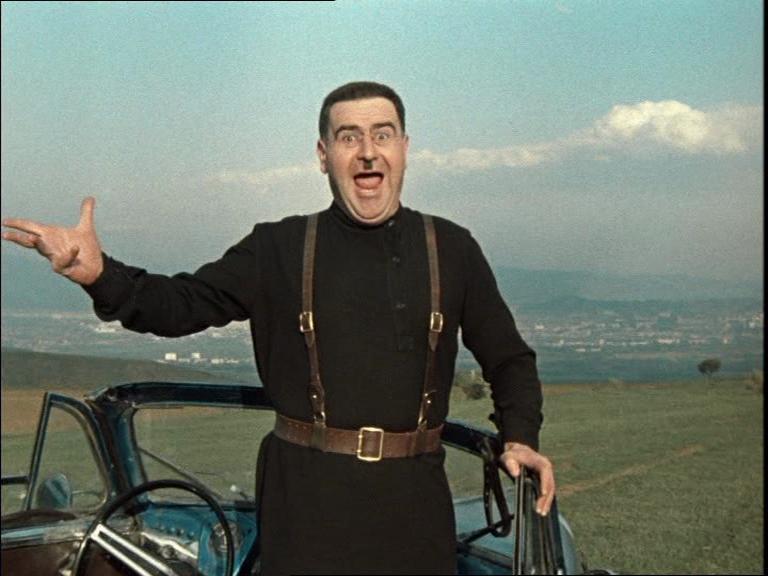
This Georgian classic by Tengiz Abuladze is a prime example of art’s ability to help us reexamine the uncomfortable questions of the past. Repentance is a timeless film about the nature of authoritarianism, passivity, and the individual’s role in the face of terror.
Varlam Aravidze, the mayor of a small town in Georgia, cuts a striking, demonic figure – all at the same time resembling Stalin, Hitler, and Mussolini. When he dies, different generations must make peace with themselves and their pasts.
After Aravidze’s funeral, a local woman, Ketevan, keeps on digging up his body from the grave. The reason for her protest is tragically clear – both her parents died at Aravidze’s cruel hands. Soon, all his evil deeds come out in the open, once Ketevan stands trial for her grave defiling. After that, ashamed of his family’s actions, Aravidze’s grandson, Tornike, commits suicide, and then Abel, Aravidze’s son, tosses his father’s body off a cliff, denying it eternal rest.
Except none of this actually took place. These tumultuous events were simply a window into Ketevan’s imagination. She does not take revenge, Tornike and Abel do not take any responsibility for their family’s guilt, and Aravidze rests in peace. Ketevan does nothing, and so nothing happens.
The popularity of this cult film in the age of Perestroika conveys a damning idea. It portends that there is little an individual can do when the system she inhabits is so rotten. And so, it augurs the impending dissolution of the Soviet system that came to pass within a few short years.
7. Office Romance (1977)
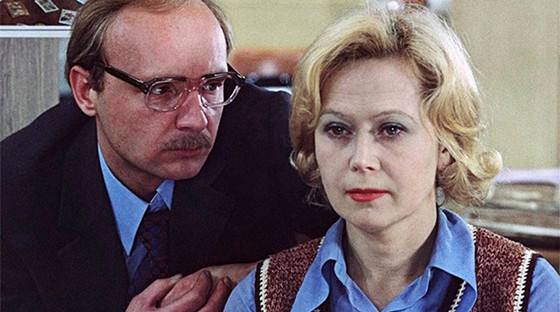
Now for something a little lighter. Better than any other Soviet rom com, this box office hit describes everyday life and relationships in the late Soviet period with a charming verisimilitude. Office Romance tells the story of an unexpected workplace romance that contains fantastic acting and a piercingly accurate portrayal of Soviet office culture.
Anatoli, a compliant and clumsy single father, works at a government statistics bureau in Moscow. A friend of his tries to get him a promotion, only to be shot down by Anatoli’s boss, Ludmila. She’s a stern woman and her subordinates make fun of her, calling her “our frump.” Following the rejection, Anatoli’s friend urges him to try flirting with Ludmila to get the promotion. Soon, one thing leads to another, and they fall in love – much to the surprise of everyone at the office. Of course, eventually drama unfolds and Ludmila finds out about Anatoli’s plan.
8. Alexander Nevsky (1938)
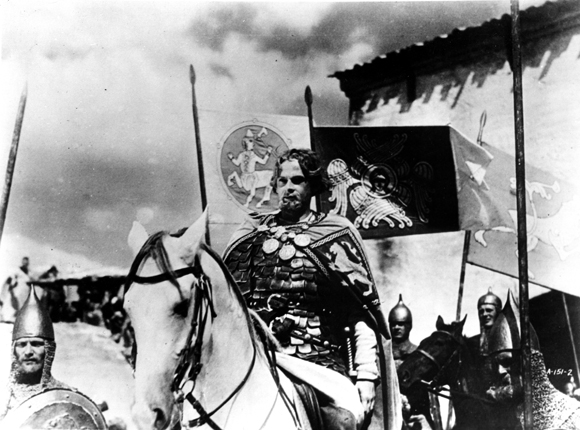
When people think about Sergei Eisenstein, the ingenious Soviet director famed for his development of the film technique of montage, the movie they bring up most is his epic, Battleship Potemkin. And it truly is the greatest silent film of all time. However, it’s in Alexander Nevsky that Eisenstein achieved his peak brilliance in combining sight and sound.
Set in 13th century Russia, this historical film is all about the Russian people’s brave defense under the eponymous Prince Nevsky against invading Teutonic knights. Of course, there are natural parallels to Soviet-German relations during this period. Nevertheless, Alexander Nevsky had a rocky road to fame. Released to national acclaim in 1938, the film was quietly shelved the following year after the signing of a Soviet-German non-aggression pact. However, with the German invasion of the Soviet Union in 1941, Alexander Nevsky staged a comeback and became the national film of choice to inspire Soviets to keep on fighting.
Alexander Nevsky combines visually stunning Eisenstein sequences with a score by none other than Sergei Prokofiev. Eisenstein and Prokofiev’s sublime audio and visual elements most famously combine in the stunning Battle on the Ice sequence. Prokofiev’s foreboding music, the ominous Klansman-style uniforms of the Teutons, and expressive cinematography make this one of the tensest battle scenes cinema has ever seen.
9. Morozko (1964)
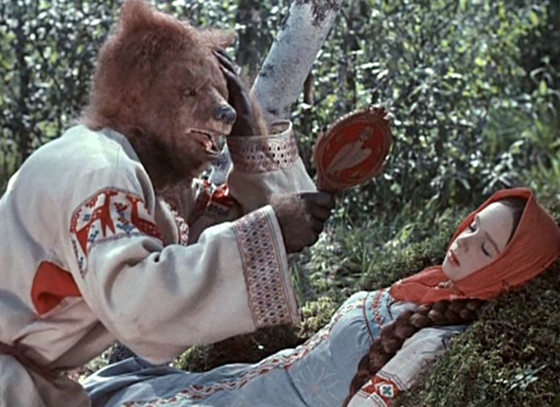
Every year in the run up to Christmastime, images of Morozko (aka Father Frost) will go viral on Western social media because of its hilarious characters. One of several popular Russian fairytale movies by director, Alexander Rou, Morozko is a feel-good, family-friendly film fit for the holidays.
Set amid beautiful wintry landscapes and replete with dazzling, traditional Russian costumes, Morozko tells the story of a young couple who must overcome family and magical challenges to be together.
Walking in the forest one day, the beautiful Nastenka meets Ivan, a handsome young man. She is immediately smitten. However, a sorcerer plays a trick on young Ivan. He transforms him into a bear and says he will not return him to his human form until he becomes less conceited. Meanwhile, Nastenka’s tyrannical stepmother is in a jealous rage after all the local young men want to marry her. So, she orders Nastenka’s father to leave her in the forest to die.
This wild story combines elements of Beauty and the Beast and Snow White, all with a distinct Russian flavor.
10. At Home Among Strangers, a Stranger Among His Own (1974)
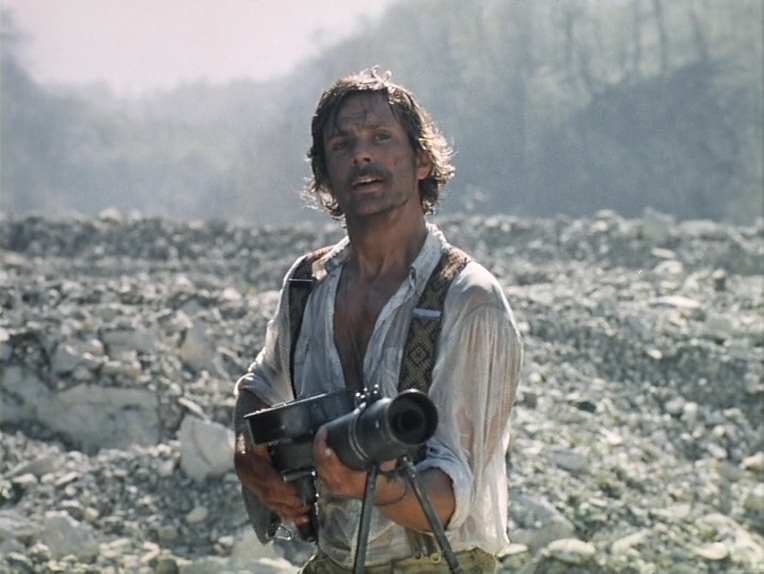
This great Russian Western, or Ostern, presents an exhilarating plot and sweeping shots of Siberia. At Home Among Strangers is the directorial debut of prominent Russian actor and director, Nikita Mikhalkov. While he is most well known abroad for his 1994 film, the Oscar-winning Burnt by the Sun, his earlier works are often more exciting to watch.
At Home Among Strangers is set in Siberia during the Russian Civil War and feels just like a Western train robbery classic, mixed with some Soviet stylistic innovation. The film’s protagonist, Shilov, is a Red Army soldier, helping guard a train full of gold on its long journey to Moscow. However, the train is robbed and so he takes it upon himself to retrieve the valuable cargo in the face of bandits and suspicions that he himself was the robber
This rip-roaring adventure features gorgeous wide shots of extensive Siberian vistas. It also contains some interesting film stock innovations. Only given a set quota of expensive foreign color film stock for the movie, the film’s production crew interspersed scenes with more affordable black and white stock. When watching, sometimes these transitions from color to black-and-white can be surprising. Nevertheless, the effect works well and adds to the many fast-paced and nostalgic moments in the movie.
Author Bio: Richard Wess is the creator of RussianFilmHub.com, the Russian and Soviet movie streaming site. On RussianFilmHub.com you can watch hundreds of great Russian and Soviet movies free with English subtitles. Follow @RussianFilmHub.